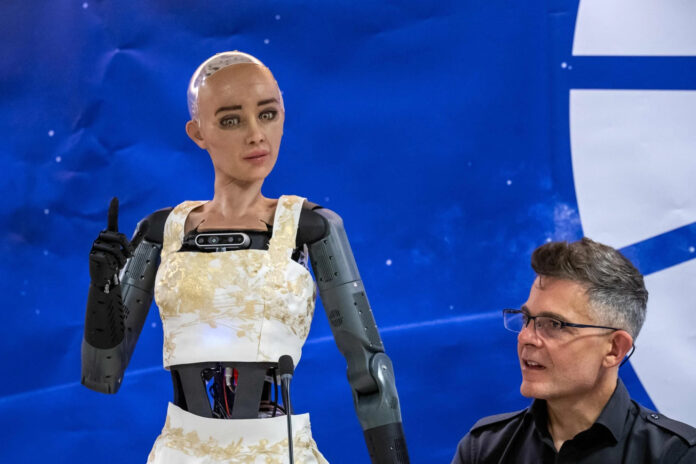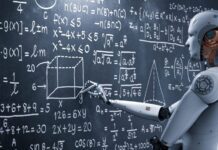Introduction
Robots combined with Artificial Intelligence (AI) has led to groundbreaking innovations, creating a paradigm shift across various industries. The integration of AI algorithms into robotic systems has revolutionized conventional processes, enabling machines to emulate human-like cognitive abilities, make informed decisions, and perform complex tasks efficiently. In this piece, we will explore the evolution, applications, future outlook, challenges, and opportunities within the realm of robotics and AI, and how it can impact our lives in positive ways.
Evolution of Robotics and AI
Robotics and AI have a long and intertwined history, dating back to the origins of both fields in the mid-20th century. Some of the early pioneers of robotics and AI, such as Alan Turing, John von Neumann, and Norbert Wiener, were inspired by the idea of creating machines that could mimic human intelligence and behavior. They envisioned robotics and AI as complementary disciplines, where robots could provide the physical embodiment and interaction for AI, and AI could provide the cognitive and learning abilities for robots.
Over the decades, robotics and AI have evolved in parallel, influenced by technological, scientific, and societal factors. Some of the notable milestones in the history of robotics and AI include:
The first electronic autonomous robots, created by William Grey Walter in 1948, which exhibited simple behaviors such as phototaxis and obstacle avoidance.
The first programmable industrial robot, invented by George Devol in 1954, which could perform repetitive tasks such as welding and moving parts.
The first AI program, developed by Allen Newell and Herbert Simon in 1956, which could prove mathematical theorems and solve logic problems.
The first mobile robot with computer vision, built by James Lighthill in 1960, which could navigate a maze using a camera and a sonar.
The first robot with natural language processing, designed by Joseph Weizenbaum in 1966, which could simulate a psychotherapist and converse with humans.
The first robot with machine learning, developed by Donald Michie in 1968, which could learn to play tic-tac-toe by trial and error.
The first robot with artificial neural networks, constructed by Frank Rosenblatt in 1969, which could recognize simple shapes and patterns.
The first robot with speech synthesis, created by Richard Bolt in 1976, which could respond to voice commands and synthesize speech.
The first robot with speech recognition, invented by Raj Reddy in 1978, which could understand spoken words and sentences.
The first robot with facial recognition, devised by Takeo Kanade in 1979, which could identify faces and expressions.
The first robot with gesture recognition, designed by Myron Krueger in 1983, which could interpret human gestures and body movements.
The first robot with emotional intelligence, developed by Cynthia Breazeal in 1998, which could express and respond to emotions.
The first robot with social intelligence, created by Brian Scassellati in 2002, which could interact and cooperate with humans and other robots.
The first robot with deep learning, constructed by Geoffrey Hinton in 2006, which could learn complex features and representations from large amounts of data.
These examples illustrate the rapid and diverse development of robotics and AI, and how they have expanded their scope and functionality over time.
Diverse Applications of Robotics and AI
Robotics and AI have found their way into various domains and industries, catering to different needs and preferences of users. Some of the most prominent and popular applications of robotics and AI are:
Manufacturing: In the manufacturing sector, AI-driven robots operate seamlessly alongside human workers, optimizing production lines and ensuring precision in assembling, packaging, and quality control. These robots can adapt to dynamic environments, enhancing flexibility and efficiency in manufacturing operations. For example, Tesla uses AI to control its robotic arms, which can perform tasks such as welding, painting, and inspecting. Similarly, Amazon uses AI to coordinate its robotic workforce, which can sort, pack, and ship products.
Healthcare: AI-integrated robots are redefining healthcare practices, aiding surgeons in performing minimally invasive surgeries with utmost accuracy and precision. Moreover, robots equipped with AI capabilities assist in patient care, from dispensing medication to monitoring vital signs, reducing the burden on healthcare professionals and enhancing patient outcomes. For example, Intuitive Surgical uses AI to power its da Vinci surgical system, which can perform complex procedures such as prostatectomy and hysterectomy. Likewise, Mabu uses AI to interact with patients, providing reminders, education, and support.
Logistics and Warehousing: Robotic systems powered by AI algorithms have significantly impacted logistics and warehousing. Autonomous robots streamline warehouse operations, from inventory management to order fulfillment, by efficiently navigating through warehouse spaces and optimizing storage layouts. For example, Ocado uses AI to manage its robotic swarm, which can store and retrieve groceries in a fraction of the time. Similarly, FedEx uses AI to operate its autonomous delivery robots, which can transport packages to customers’ doorsteps.
Advancements in AI-Enhanced Robotics
The integration of AI into robotics has led to remarkable advancements, enabling robots to perform tasks that were previously impossible or impractical. Some of the key advancements in AI-enhanced robotics are:
Enhanced Perception and Navigation: AI-enabled robots boast improved perception abilities, allowing them to recognize objects, interpret their environment, and navigate complex terrains autonomously. This enhanced perception is pivotal in tasks such as object manipulation and collaborative work with humans. For example, Boston Dynamics uses AI to enable its Spot robot, which can traverse rough terrain, climb stairs, and open doors. Similarly, OpenAI uses AI to train its Dactyl robot, which can manipulate objects with human-like dexterity.
Human-Robot Interaction: The integration of AI has enhanced the collaboration between humans and robots, enabling more intuitive and safer interactions. These advancements in human-robot interaction facilitate seamless cooperation in shared workspaces, where robots assist humans in performing tasks efficiently and safely. For example, Rethink Robotics uses AI to empower its Baxter robot, which can learn from human demonstrations and feedback, and adapt to changing situations. Likewise, SoftBank Robotics uses AI to animate its Pepper robot, which can communicate and empathize with humans.
AI-Driven Predictive Maintenance: AI algorithms are utilized in predictive maintenance, enabling robots to analyze their performance data in real-time. This proactive approach helps in identifying potential issues before they escalate, reducing downtime and optimizing operational efficiency. For example, ABB uses AI to monitor and diagnose its industrial robots, detecting anomalies and faults, and providing recommendations and solutions. Similarly, KUKA uses AI to optimize its robot fleet, predicting maintenance needs and scheduling service appointments.
Future Prospects and Challenges
The future of AI in robotics holds vast potential, driven by ongoing advancements in technology, data, and innovation. Anticipated developments include further advancements in machine learning algorithms, improved adaptability in unstructured environments, and enhanced learning capabilities for robots. However, challenges such as ethical considerations, regulatory frameworks, and societal acceptance remain crucial aspects to address. Some of the possible ways to overcome these challenges are:
Ethical considerations, which can ensure that the AI solutions are aligned with human values, norms, and rights, and that they do not cause harm, bias, or discrimination.
Regulatory frameworks, which can establish clear and consistent rules and standards for the development and deployment of AI solutions, and ensure accountability and compliance.
Societal acceptance, which can foster trust and confidence in the AI solutions, and promote awareness and education among the users and the public.
These suggestions indicate the importance of addressing the human and social aspects of AI and robotics, and of creating a trustworthy and engaging relationship between users and AI.
Conclusion
The integration of AI into robotics is reshaping industries, offering unparalleled efficiency, precision, and versatility. As AI technologies continue to evolve, the collaboration between intelligent robots and humans will redefine work and society. Robotics and AI are not only products of innovation, but also catalysts for innovation, inspiring new possibilities and opportunities for the future.









